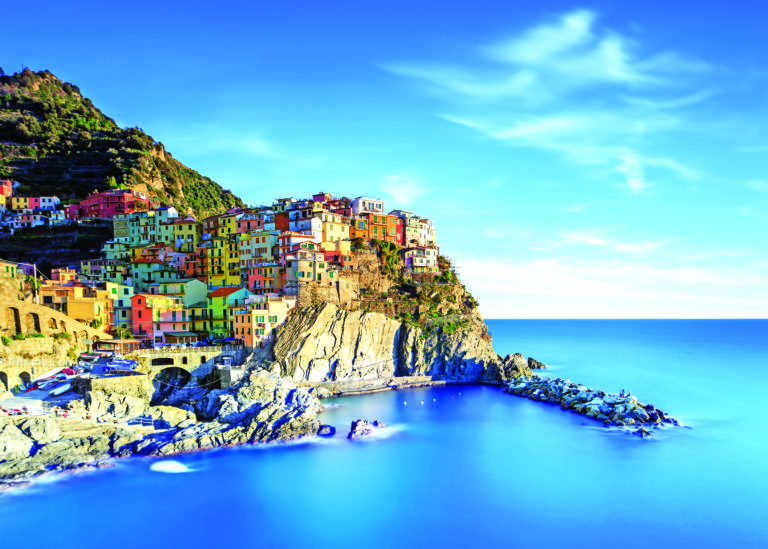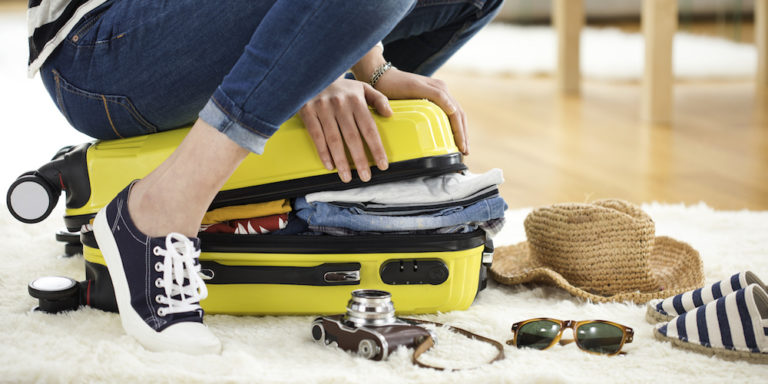Every piece of advice is crystal clear. When in the tropics, beware of crocodiles. Yet, there are those who think even the most fundamental wisdom does not apply to them. People like me. So when I saw a juvenile saltwater crocodile sprawled out on the ground during our visit to Kopar Village in the Eastern Sepik, I had to have a photo.
So, as I cradle the big, slimy reptile with the help of the local chap who slew the beast, my grip is momentarily lost and the jaw with its needle-sharp teeth slams down on my thumb. “Ouch!” is not what I said as the blood spurted from the painful puncture. Lyn, the ship’s doctor was not impressed, evidenced by her tightly pursed lips and furrowed brow as the bandage was applied.
Carelessly cradled carnivores aside, the Sepik River of Papua New Guinea is the epitome of adventure and is recognised for its vivid living culture, preserved almost as if time itself has stood still. Although the straight-line distance from source to mouth of this iconic waterway is barely 500 kilometres, its wide channel twists and turns in a serpentine course that, if stretched out, would cover more than double this. And all along its length, little villages and hamlets dot the banks, populated by Melanesian people with their own mysterious and ancient culture.
Here at Kopar, we are treated to vibrant and energetic dances and songs that tell the story of these hardy folk who have lived a subsistence life here for many hundreds of years, their rich art and culture forged in blissful isolation.
Sepik culture & art

Daughter of the late Grand Chief Sir Michael Somare and native of PNG’s East Sepik province, Betha Somare, is with us aboard Heritage Adventurer, providing us with vital interpretation of this otherwise bewildering spectacle. I’ve always loved Sepik art, particularly the carvings and I was able to add another beautiful piece to my small collection. I asked Betha why Sepik art was so sought after.
“Sepik artists are known because they are so prolific with carvings,” she told me, “And the art differs from the mouth of the Sepik to the Lower Sepik, to the Middle Sepik and to Upper Sepik. So you are not going to be bored shopping on the Sepik River.”
Also a frequent traveller with Heritage Expeditions is the internationally acclaimed scientist, explorer and conservationist, Professor Tim Flannery, who holds Melanesia close to his heart as one of his favourite destinations. “The thing that drew me to Melanesia was the pure adventure of it – I didn’t know there were so many species to be discovered,” he told me. “It’s just an incredible wonderland of indigenous cultures and marvellous biodiversity.”

In fact, during one voyage with Heritage Expeditions to Kofiau, a seldom-visited island composed of ancient continental crust in the Raja Ampat group of Southwest Papua, Professor Flannery realised there were no mammal records for the location and instigated a citizen science exercise with the 100 passengers.
“As a result [of that survey] we’ve written a scientific paper which is now in the process of being published.” There aren’t too many expedition cruise companies who can list such activities on their sales brochures.
Meeting isolated tribes

On another occasion in the Solomon Islands, Professor Flannery led a team of guests to meet with the rarely contacted Kwaio people of central Malaita. “That was certainly one of the big standouts for me,” recalled Professor Flannery. “We were the first group ever into the Kwaio area and after we had a peace and reconciliation ceremony, we met the people who had come down from the mountains. They live up beyond 1,000 metres and have had very little to do with the outside world, so having them put on a performance and hold a market was an amazing experience.”
Heritage Expeditions are known the world over for their dedication to birders and every departure always carries a committed contingent of ‘twitchers’ eager to add new species to their respective ‘life lists’.
Visits to isolated communities is a hallmark of expedition cruising, but Heritage Expeditions seem able to go beyond that offered by many operators. For example, we landed on the island of Bougainville, a large autonomous region about twice the size of South Australia’s Kangaroo Island, where the controversial Panguna copper mine was located. Ethnically connected to the Solomon Islands, but politically aligned with PNG, Bougainville has seen more than its fair share of strife. When local landowners became disgruntled with the mine’s operators, they mounted an armed campaign to shut it down which they achieved after a 10-year struggle. Abandoned since 1990, wandering through some of the crumbling heavy machinery is like a post-apocalyptic experience and witnessing the environmental damage, it’s easy to see why the locals ousted the mining company.

All through Melanesia, we are treated to amazing cultural exhibitions and demonstrations and Bougainville is no exception. After our mine tour, we are led to a shady beach where locals are bedecked in colourful traditional attire. Greeted warmly in Melanesian custom, the festivities are launched with such gusto that it wasn’t long before we were all swept up into the joyous atmosphere singing and clapping with the throng.
A few days later, as we approached the tranquil island of Makira on the outer perimeter of the Solomon Islands, we were ‘ambushed’ by a horde of near-naked villagers wielding spears and clubs who yelped and bellowed as we feigned terror and surprise in response. It’s all part of the show, folks, and no expeditioners were harmed in the making thereof. But such authentic and spontaneous exhibitions are part and parcel of this fantastic voyage.
Meeting and communing with the inhabitants of these far-flung communities, where there are no cars and only muddy tracks between the handful of tiny villages constructed from bamboo, timber and thatch gives you a deeper understanding of life beyond the shopping mall. Witnessing island life where often electricity, fresh water and basic medical facilities are a luxury helps us appreciate the privileges we take for granted at home.
Expedition leader and operations director, Nathan Russ, makes sure we are able to reciprocate with donations of educational material, first aid and handyman tools. I always make a point of bringing a bag of clean, near-new clothes for distribution to the neediest.
Experts in the field

The quality of speakers and guides aboard Heritage Adventurer during our jam-packed 17-day ‘Secrets of Melanesia’ voyage are consistently exceptional. On this voyage we were doubly spoiled with the inclusion of Neil Nightingale and Karen Bass, both of whom have many years of experience working for the BBC on such milestone productions as Blue Planet and numerous specials with Sir David Attenborough.
Expedition cruising with Heritage Expeditions is neatly summed up by Professor Flannery: “When done well, [expedition cruising] strengthens local communities, enhances science and gives a fabulous, unique experience and opportunity to go to places that otherwise you would never get to.”
Just don’t go sticking your hands into the mouths of crocodiles.
Get in on the secret
Heritage Expeditions offers voyages throughout the Asia-Pacific region on their newly acquired luxury vessel, the 140-passenger Heritage Adventurer (formerly Hapag-Lloyd’s MS Hanseatic).
The 2023 ‘Secrets of Melanesia’ voyage departs Madang PNG on 23 October, arriving Port Vila, Vanuatu on 8th November. Visit heritage-expeditions.com
Photography by Rodericke Eime, Aaron Russ, Dana Brown
MiNDFOOD Promotion







